Here are some important pros and cons to keep in mind when you find yourself underwhelmed with your current situation.
At James River Construction (JRC)
Are you bursting at the seams of your current house?
Maybe there’s a new baby on the way, or the kids finally need their own rooms. Or maybe you’ve just always wanted more space to relax, work out, or build your dream bar. Regardless of the reason, if you’re unhappy with your current home, you’ve probably weighed the options of building an addition or building a brand new home. It can be a difficult decision and there are a lot of factors to consider before taking on a massive addition or a new construction project. Here are some important pros and cons to keep in mind when you find yourself underwhelmed with your current situation.
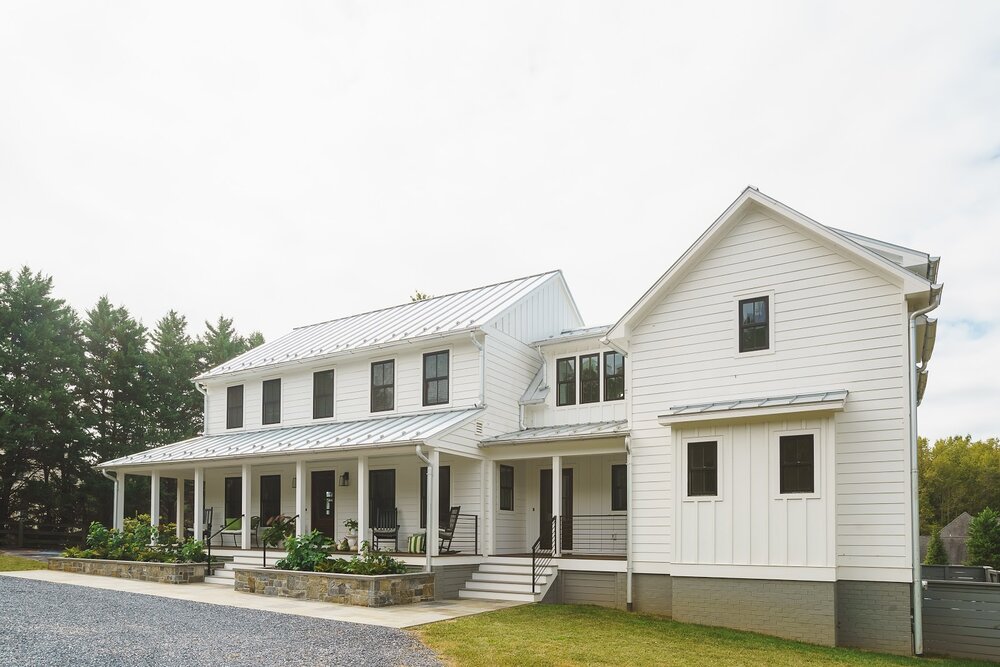
This JRC addition project allowed the family to stay in a home they loved, while blending seamlessly into the existing structure.
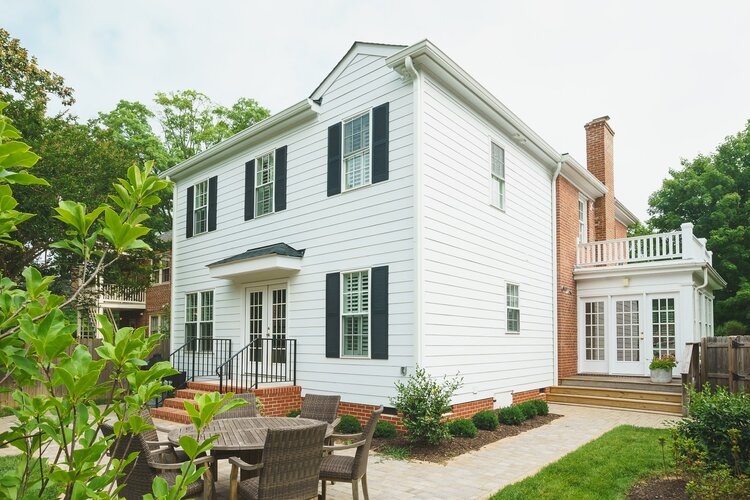
This addition by JRC worked within the limited confines of a suburban yard to create a spacious living area that extended out onto a relaxing patio.
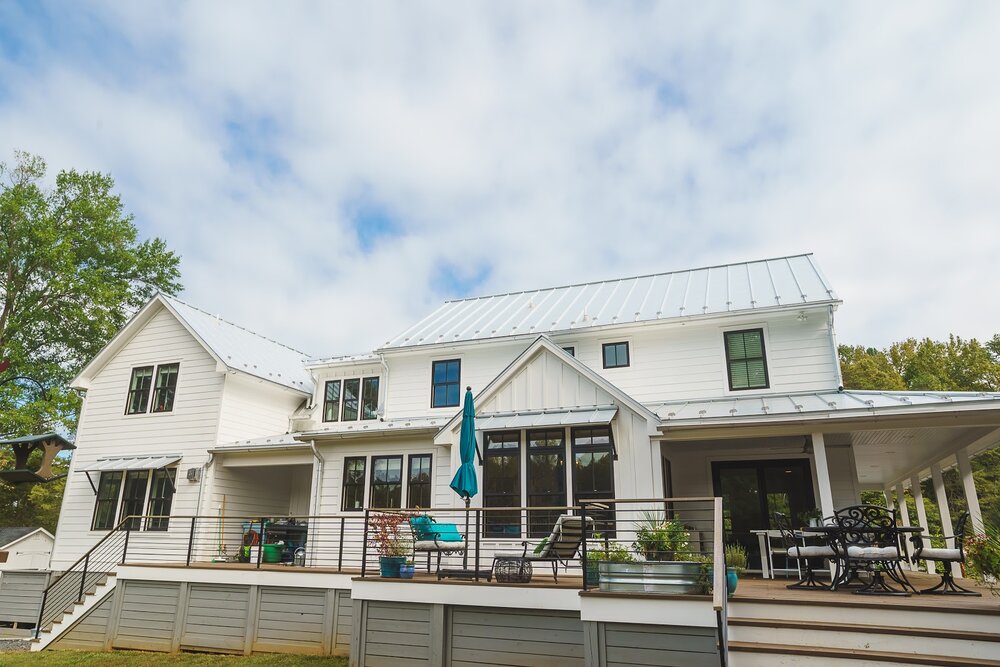
From the front and the back, this addition looks like it was always meant to be.
Home Additions
PROS
No need to go through one of life’s most stressful tasks – moving. While you may need to pack some things up or move things around to accommodate construction of an addition, you won’t have to pack up your entire life and belongings in order to get more space. For many people, this in and of itself is the reason they’re still in a home that doesn’t work for them.
You won’t be uprooting your kids to a new school district or neighborhood where they’ll need to find and make new friends. Likewise you’ll be able to stay close to neighbors you enjoy. No going away party needed.
An addition project can add a lot of equity and value to your home. In the long run this can be a great financial decision, whether you sell or decide to dip into that equity. Check real estate listings in your area to see what the current price per square foot for houses on the market is, and then do the math on the extra space you think you might need to find out a rough estimate of what your home might be valued at after an addition.
CONS
Even if staying in your current home is preferable, it’s good to consider the downsides before you embark on a major construction project. The first con is just that – that you’ll be undergoing a major construction project in the home where you already live. Be prepared for a few months of chaos, but just keep in mind that it will be worth it in the long run.
Finding a conscientious and experienced contractor is the key to avoiding rough spots in this process. They will have crews who will be respectful of your home, your time and space. They will also have a good process in place for designing and planning things in advance so that once construction begins, the process goes as smoothly and quickly as possible. Make as many design decisions up front as you can so that little things like floor finishes or hardware don’t hold up the process.
Another downside to building an addition is that you will always be a little restricted in what you can do. You likely can’t increase the size of your lot, and city codes or ordinances may restrict certain things you can do, especially if you’re in a historic district. Also, if your home is in a neighborhood with a property or home owners’ association, you’ll have to run all design and construction plans through them to make sure your home’s addition meets their requirements. It’s good to research all of these issues before pulling the trigger on a project. Again, a good contractor can help you through this process and will also be able to help you make the most of the land and space that you already have.
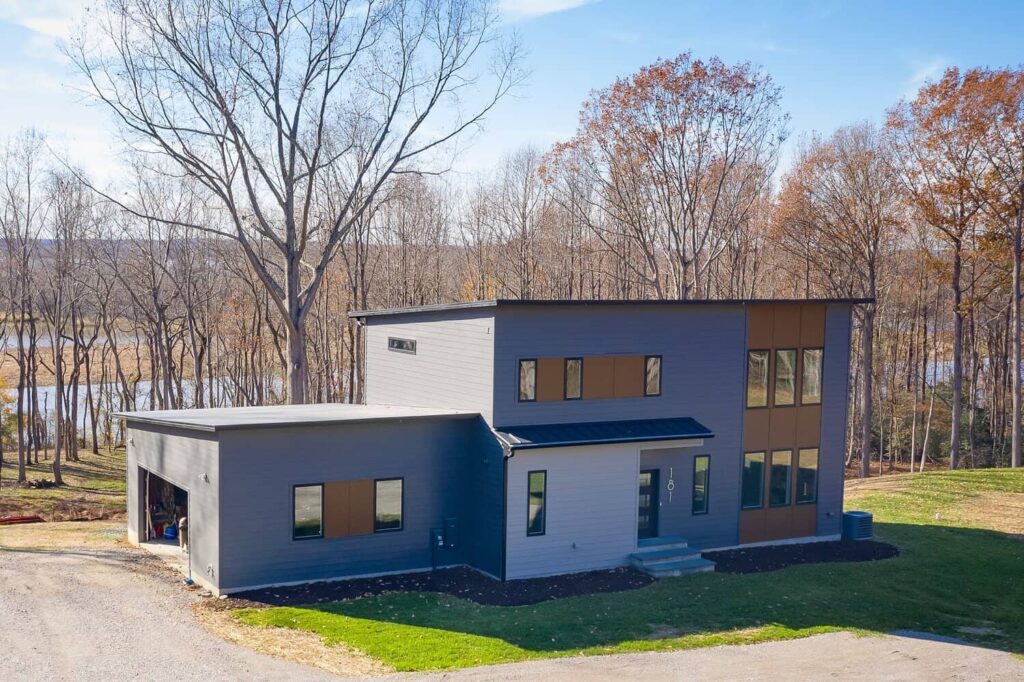
This new construction client wanted a modern river house with design features that spoke to their particular aesthetic..
New Construction
Even if you love your home or neighborhood, there may be restraints on your lot that means you aren’t able to build the addition that would make your home work for you again. On the other hand, maybe your home is perfect, but the location isn’t great, your commute has increased or you’re just ready for some new scenery. If this is the case, then new construction may be the way to go
PROS
The biggest pro of new construction is that you can create exactly what you want. Every finish and detail can be your decision, so you’re not making any concessions as you would probably have to do if you were purchasing an existing home. Of course, you likely have a budget to stay within, but an experienced contractor can help you figure out how to get the majority of your “must-haves” into your design or help you prioritize certain features, details, and materials.
Many people opt for new construction because it gives them peace of mind that they won’t have to deal with any major repairs or renovations for years to come. Most new homes come with a limited warranty period during which any issues that pop up can be dealt with for free by the builder. But even after that warranty period is up, you won’t have to think about a leaking roof or replacing windows or HVAC units – all of which can be extremely costly and inconvenient.
Likewise, new construction generally runs pretty smoothly once all the decisions have been made. There are generally no big “surprises” along the way like there often are in a renovation project. Of course, new construction can run into issues like weather or inspection hold ups, but you won’t have to worry about major budget blow-outs because it turns out there are termites in the foundation or that something has to be brought up to code.
While your new home is being built, you’ll also likely be living in your current home, so you aren’t dealing with construction happening in your space. Everything is off-site and won’t interfere with your day to day activities.
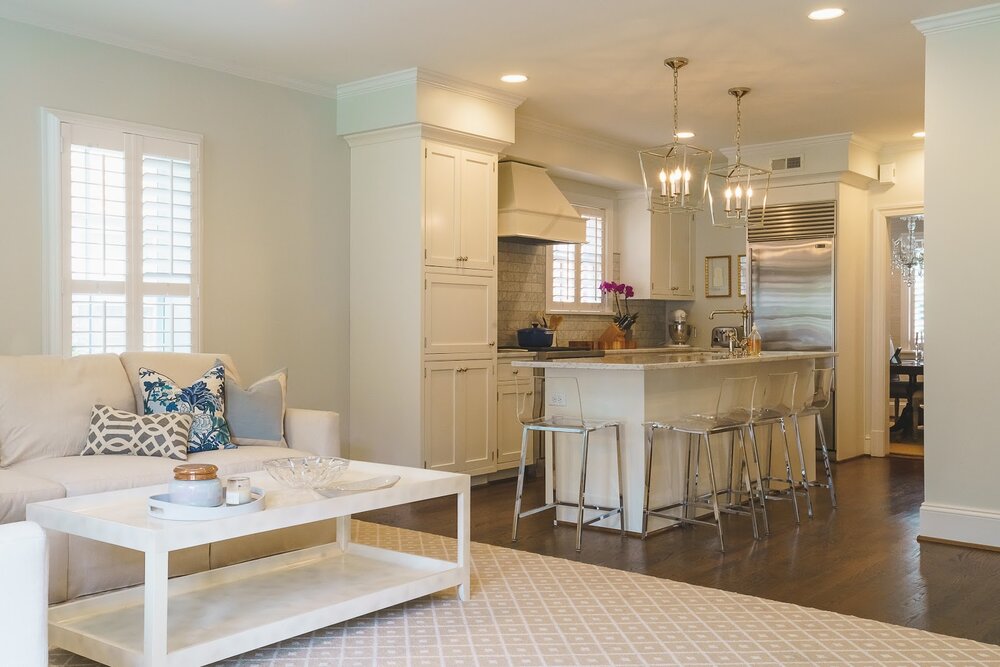
This client’s addition gave them an extra living space right off the kitchen, making gathering and entertaining seamless.
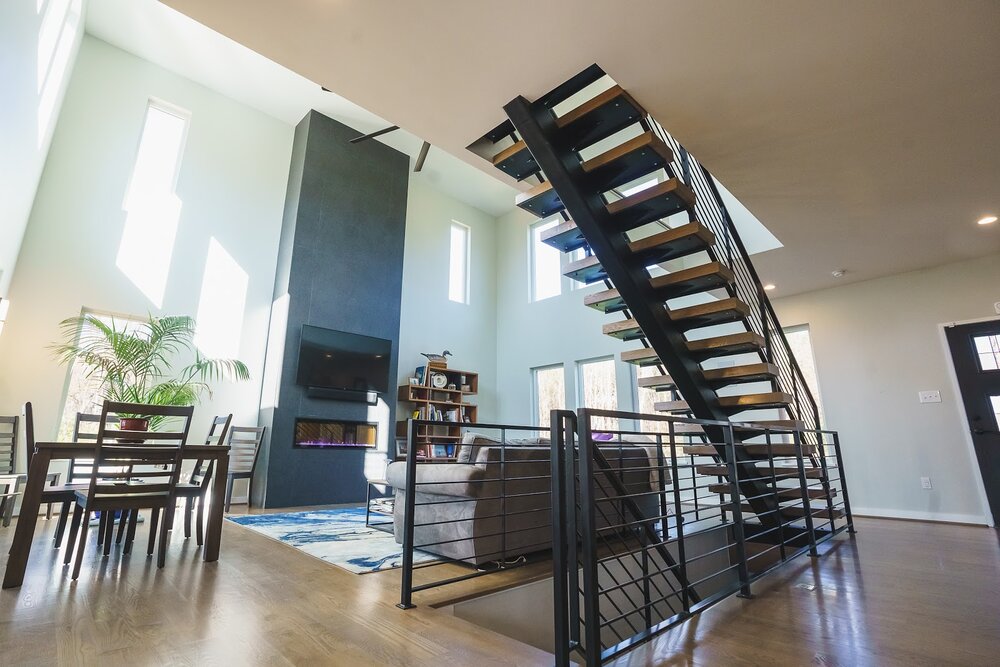
Opting for new construction allowed our client to make bold design decisions like this open, floating staircase and vaulted ceilings.
CONS
One of the biggest issues with new construction is finding a lot that makes sense for your new home. You may have to go a little out of your way to find the perfect piece of land, but if you know you can build your dream house there, it may be worth it.
For many people, new construction is extremely stressful because there are so many decisions that have to be made. From room layouts to tile design, for the indecisive, new construction can be a nightmare. A good interior designer is the best solution to this problem, as they will do the heavy lifting of decision making once they’ve pinpointed your style and aesthetic. Communicating your likes and dislikes to a professional and then letting them run with it is a lot easier for many people than standing in a warehouse full of granite trying to pick just the right thing for your kitchen island. On the other hand, many people find those decisions the most rewarding and fun part of the process.
Another issue that some people run into with new construction is the process of selling their current home and knowing exactly when to put it on the market so that they aren’t left homeless for any amount of time or stuck paying two mortgages for months. Of course, extended closing dates can be written into contracts, but new construction timelines can fluctuate depending on weather, material availability and inspections.
A good real estate agent will help you determine the best time to list your house based on your specific market and buyer demand. They will also know the best way to write fluctuations into sales agreements and contracts. Whether an addition or new construction is the right decision for you and your family, the success of either depends heavily on finding an experienced contractor. Look for companies that have handled the exact kind of project you anticipate. Review their websites and photo galleries. Check up on their online reviews and status with the Better Business Bureau or the contractor licensing agency in your state to ensure they are up to date on licenses, permits, insurance, taxes and anything else that could be a tell-tale sign of a fly-by-night company.
Talk to more than one company about your needs to see if there are differences between their approaches and ideas. Inquire about designers, architects or other professionals they partner with to ensure they have a full-service approach. This decision is the most critical one you will make because whether you are adding on to your home or building a brand new one, you want to make sure it fits you and your family perfectly for many years to come.
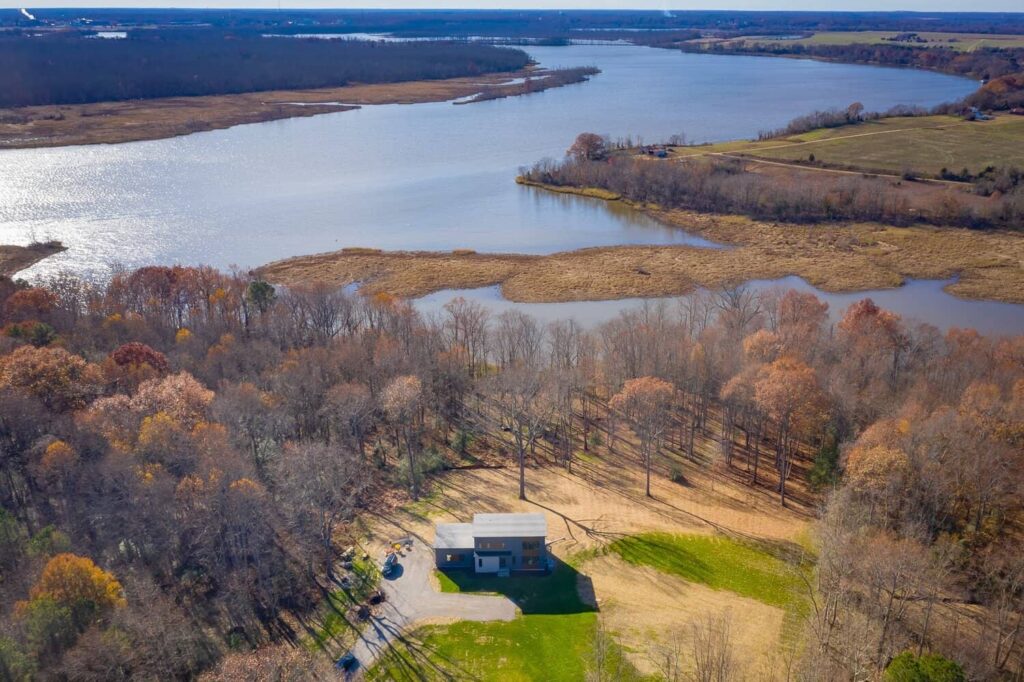
This client had the perfect lot – all they needed was for us to put the perfect house on it.
